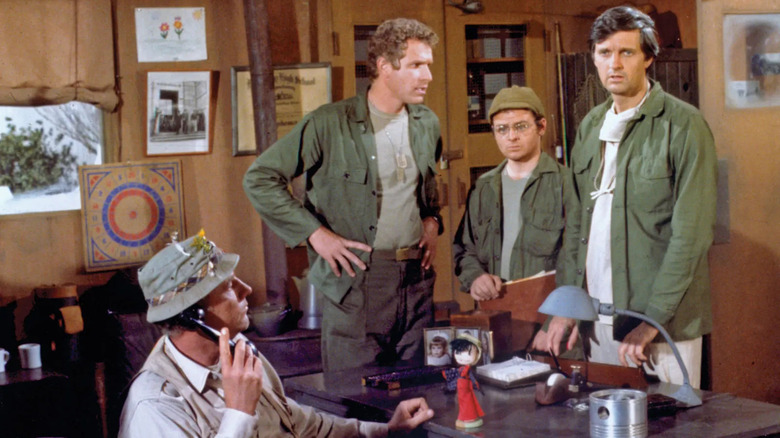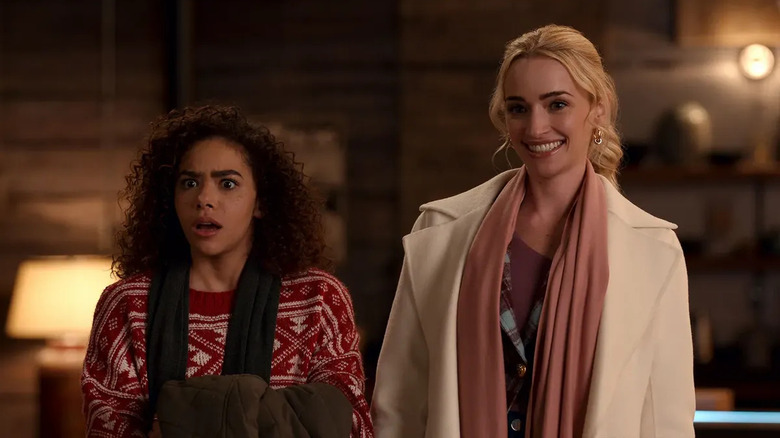M*A*S*H Still Holds A TV History Record 40 Years After It Ended
Of all the popular older shows, "M*A*S*H" is probably the hardest for modern viewers to wrap their heads around. Not only did it go on for eight years longer than the war it was based on, but its finale was watched live by 106 million viewers, or over 60% of all American households. Considering that the recent series finale of "Succession" only brought in an estimated 2.9 million live viewers, this number seems almost impossibly high. Some other huge finales were "Cheers" in 1993 with 84 million viewers, "Seinfeld" in 1998 with 76 million, and "Friends" in 2004 with 66 million.
Of those shows, "M*A*S*H" seems to have stuck around the least in the public consciousness. Everyone still loves Ted Danson, "Friends" had a big resurgence in popularity in 2019, and Netflix bought Seinfeld for $500 million in 2021. While "M*A*S*H" is still referenced a decent amount in pop culture, it sure doesn't seem like Netflix would ever spend $500 million to buy the rights to it any time soon. Maybe it's just because "M*A*S*H," while always a comedy, went to darker places and took itself more seriously than most of the other top shows on the list. "M*A*S*H" can come across as preachy or sappy to modern viewers, whereas a show like "Seinfeld" had zero potentially contentious messages to preach, nor any strong emotions to be sappy about.
Of course, the show's finale ratings aren't just surprising because of how little "M*A*S*H" is talked about now; it's surprising because of how large those ratings are for something that's not the Super Bowl or a presidential debate. Why aren't any scripted shows today pulling in ratings this big?
A few too many shows
The big reason why "M*A*S*H" has never been beaten is simply because there are a lot more ways to watch TV now, and a lot more shows to pick from. In 1980, television was still dominated by ABC, CBS, and NBC, with shows being written mainly with the aim of having universal appeal. Viewers' options expanded significantly with the growing number of cable services, as well as the increase in shows dedicated to reaching specific demographics. Things then spiraled out of control with the advent of streaming: In 2022 there aired nearly 600 scripted shows, far bigger than the 200 shows aired in 2009, which itself was far bigger than the number airing back in 1983.
This has led to a TV landscape where, outside of rare hits like "Game of Thrones" and "Stranger Things," most shows don't have the sort of broad appeal "M*A*S*H" got to have. "Yellowstone" gets over 10 million views an episode these days, for instance, but it doesn't feel like a big show to anyone outside the series' older, more conservative, less online audience. "Saturday Night Live" made a whole sketch about this phenomenon earlier this year, referencing the fact that nobody seemed to know about "Ginny & Georgia" despite it being the number one new show on Netflix that month.
Every show today seems to have its own little niche, appealing to a few specific demographics — or taste clusters, if you will — because appealing to everyone no longer seems possible. Unless the television landscape drastically changes, it doesn't seem like "M*A*S*H" will be dethroned as the most-viewed episode of a scripted program any time soon.

